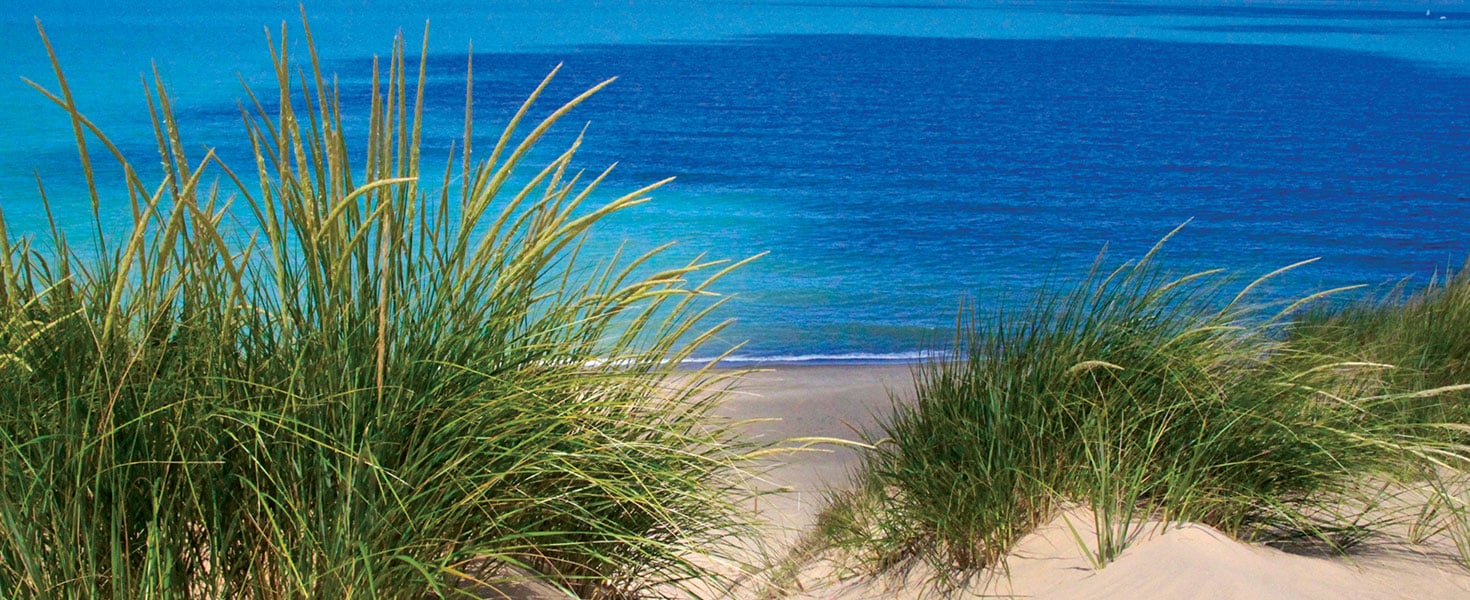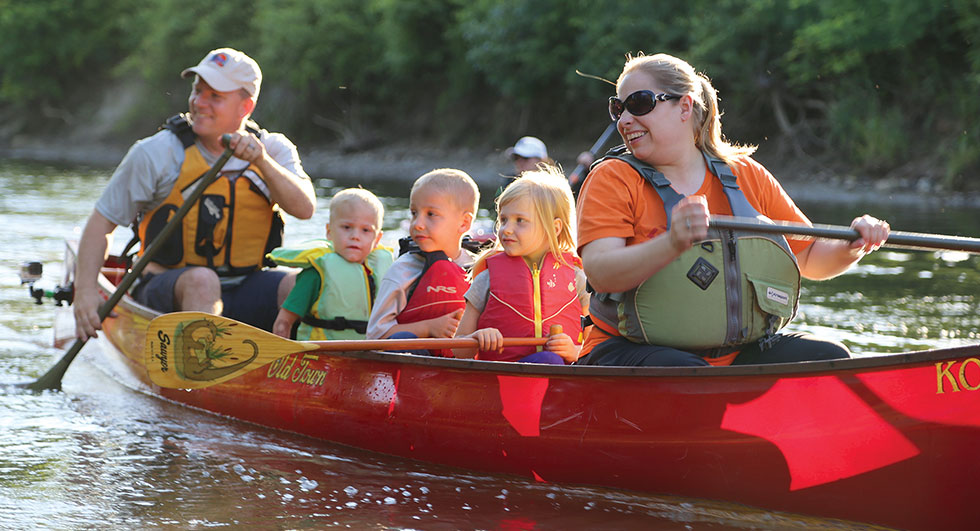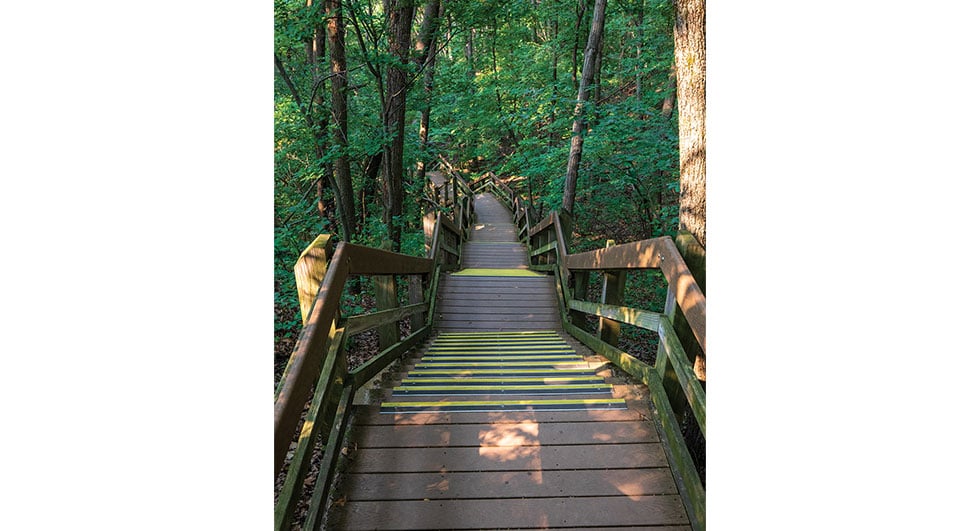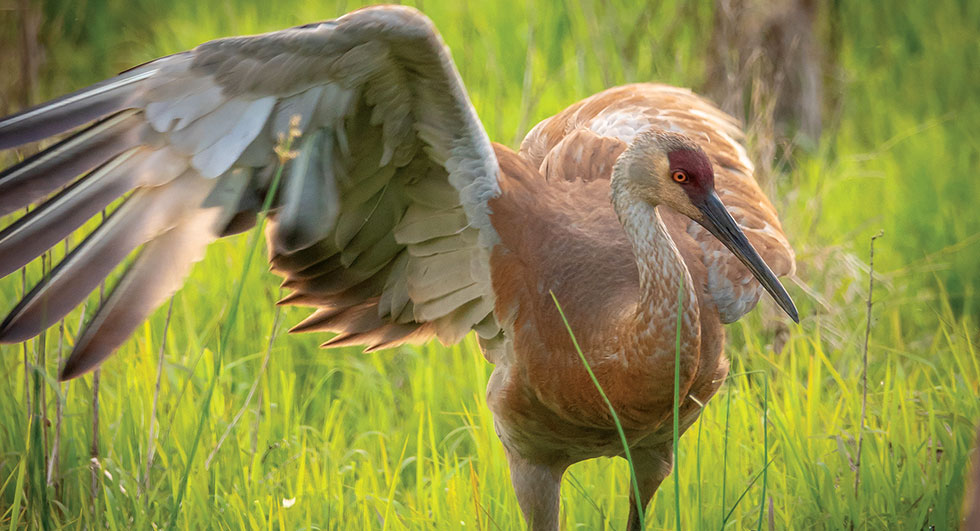What to See and Do at Indiana Dunes National Park
The sand dunes are impressive, but check out the hiking, bird-watching, fishing and boating, too

Picture a white sandy beach stretching in both directions as far as the eye can see, nestled alongside a wide watery expanse sporting kaleidoscopic colors like turquoise, blue and gray. You could easily persuade yourself you’re in some tropical paradise. But then, on the distant horizon, your eyes fall on a line of mighty skyscrapers. That would be the skyline of Chicago, seen from Indiana Dunes National Park on the southern shore of Lake Michigan.

FROM SANDS TO SAVANNAS
The park’s unique landscape—the dunes can reach 200 feet—was formed more than 10,000 years ago when a receding glacier carved out the Great Lakes, depositing huge quantities of sand on Lake Michigan’s southern shoreline that were shaped and reshaped by wind and waves over the centuries. Just an hour outside Chicago, the park’s 15,349 acres stretch along the shoreline for about 15 miles, completely surrounding the much smaller Indiana Dunes State Park.
Of course, it’s the park’s miles of sandy beaches that are the main attractions for summertime visitors looking for a place to swim and bask in the sunshine. But so many other recreational opportunities exist inside the park, like kayaking and canoeing—on Lake Michigan itself for the truly adventurous—or on calmer inland waters like the Kankakee River.
The park is also a popular spot to fish for catfish, walleye, bass, salmon, steelhead and lake trout. Cyclists will enjoy several dedicated biking trails, including a 10-mile mountain biking course and other trails that range from paved surfaces to crushed gravel.
The national and state parks combine to offer 15 hiking trails of varying lengths and difficulties totaling more than 50 miles. USA Today ranks Trail 9 inside the state park, with its magnificent views of Lake Michigan, as one of the most scenic in the country.
National park trails such as the Cowles Bog Trail and the Paul H. Douglas Trail leaving from the park’s Center for Environmental Education have short loops attaching to longer ones, passing through a variety of scenery, including wetlands, black oak savannas and the dunes themselves. Both the Cowles Bog and the Paul H. Douglas trails lead to the Lake Michigan shoreline. Don’t miss hiking the perimeter of Mount Baldy, a 120-foot “living dune” that moves about four feet per year, swallowing everything in its path, including trees.

More challenging is the Dune Succession Trail in the West Beach area, which has hikers ascending 270 stairs to a spot offering expansive views of the lake and the Chicago skyline. The toughest hike in the park, The 3 Dune Challenge, consists of a 1.5-mile climb up the three tallest dunes, encompassing a total of 552 vertical feet. Hikers are rewarded with astonishing views of Lake Michigan and the satisfaction of being a “Dune Conqueror,” recognized with a bumper sticker available at the park’s visitor center.

CABBAGE, COYOTES AND CRANES
Visitors to Indiana Dunes may be surprised to learn that it’s the country’s fifth most biodiverse national park, its 1,960 documented species ranking right up there with the much larger Yosemite and Yellowstone national parks. Vegetation as diverse as prickly pear cactus, skunk cabbage and carnivorous pitcher plants can be found in addition to a greater variety of native orchids than in all of Hawaii, as well as the federally endangered Pitcher’s thistle.
Animals like red foxes, coyotes, beavers and four kinds of bats call the park home. Other inhabitants include odd creatures like wood frogs that can freeze their bodies solid during the winter and six-lined racerunner lizards that can dart at 18 miles per hour, almost as fast as Olympic sprinters.
An impressive 370 types of birds can be seen in the national and state parks, either all year long or during the spring and fall migrations. They range from majestic sandhill cranes to tiny colorful warblers to waterfowl like herons and egrets.
HOMESTEADS AND HAUNTED TOURS
History also runs deep inside the park, which boasts attractions such as the Bailly Homestead, the home of a 19th-century fur trader, and Chellberg Farm, where three generations of Swedish immigrants once resided. Don’t miss the five Century of Progress homes, originally built for the 1933–1934 Chicago World’s Fair. After the fair closed, they were brought to the Lake Michigan shoreline by train and barge in hopes of sparking more home construction in the area. The homes are privately owned, but you can admire their exteriors, like that of the bright-pink Florida Tropical House, with a large open terrace on the roof, or the House of Tomorrow, with its second and third floors clad entirely in glass.
Indiana Dunes National Park offers an array of visitor programming, including ranger-guided hikes, boat cruises, craft demonstrations, children’s events and concerts.
And since the small towns in the area offer attractions of their own, many park visitors also check out such nearby sights as Broken Wagon Bison in Hobart, where wagon tours take you through a herd of 100 bison; Chesterton’s European Market, an outdoor market (open May through October) that offers artisan foods, clothing, jewelry, and fresh produce and flowers; the classic 49er Drive-In Theater in Valparaiso; and Chaos Haunted and Historical Tours, with haunted walking tours and pub crawls throughout northwest Indiana.
Indeed, there's so much to do beyond the dunes.
